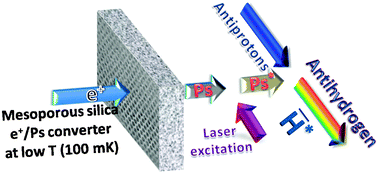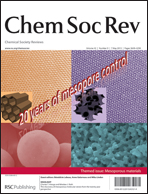Mesoporous materials for antihydrogen production†
Abstract
Antimatter is barely known by the chemist community and this article has the vocation to explain how antimatter, in particular antihydrogen, can be obtained, as well as to show how mesoporous materials could be used as a further improvement for the production of antimatter at very low temperatures (below 1 K). The first experiments with mesoporous materials highlighted in this review show very promising and exciting results. Mesoporous materials such as mesoporous silicon, mesoporous material films, pellets of MCM-41 and silica aerogel show remarkable features for antihydrogen formation. Yet, the characteristics for the best future mesoporous materials (e.g. pore sizes, pore connectivity, shape, surface chemistry) remain to be clearly identified. For now among the best candidates are pellets of MCM-41 and aerogel with pore sizes between 10 and 30 nm, possessing hydrophobic patches on their surface to avoid ice formation at low temperature. From a fundamental standpoint, antimatter experiments could help to shed light on open issues, such as the apparent asymmetry between matter and antimatter in our universe and the gravitational behaviour of antimatter. To this purpose, basic studies on antimatter are necessary and a convenient production of antimatter is required. It is exactly where mesoporous materials could be very useful.

- This article is part of the themed collection: Mesoporous materials

 Please wait while we load your content...
Please wait while we load your content...